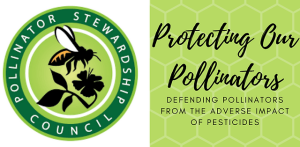Beekeepers Must Move Bees
Last fall the EPA published a new pesticide label originally for the foliar application of four neonicotinoid pesticides. By December, the EPA stated this new pesticide label language would be “harmonized” across all chemistries. The label was meant to protect pollinators.
The Pollinator Stewardship Council with the Bee Industry, sought a response from EPA’s Assistant Administrator clarifying our concerns with the new label. The Pollinator Stewardship Council received an answer from EPA, and Mr. Dave Hackenberg, representing the National Honey Bee Advisory Board, received a different letter from EPA (even though both groups along with AHPA and ABF signed the original letter). Both reply letters are attached.
The Office of Investigations for EPA stated in a letter to the Pollinator Stewardship Council, they will review our concerns and “a determination will be made as to the most appropriate course of action.” In the response to Mr. Hackenberg, Assistant Administrator Jones clarifies that contrary to the December EPA webinar this new label language is for the “four products formulated with the four nitroguanidine neonicotinoid chemicals (clothianidin, dinotefuran, imidacloprid, and thiamethoxam) as well as two recently registered as active ingredients: tolfenpyrad and cyantraniliprole.” These last two pesticides are an addition to the original label adjustments presented August 15, 2013 by EPA for foliar applied neonics only. As to the concerns beekeepers expressed about the five conditions listed on the label past the “do not apply statement:” EPA stated to Mr. Hackenberg, “Both of the foregoing prohibitions, however, are subject to the exception listed in the “unless . . .” clause.” “. . . application would be legal if one of the five conditions is met . . .”(SEE BELOW)
The bee industry has its answer: any harm that comes to a beekeeper’s managed colonies due to a foliar application of clothianidin, dinotefuran, imidacloprid, thiamethoxam, tolfenpyrad, and cyantraniliprole is the responsibility of the beekeeper. If bees are damaged or die due to a foliar application of a those products during bloom, and the application was made based on one of the five conditions, the fault of bee deaths lies with the beekeeper. Beekeepers must move their bees. No clarification was provided by EPA on what constitutes notifying a beekeeper to move their bees, if a State has a voluntary apiary registry program, or for the loss of a honey crop or crop pollination if bees are to be moved. The cost of time, labor, and loss of honey crop will be shouldered by the beekeeper.
While EPA has clarified the “conditions” will supercede the “do not apply” statement, the label still has undefined terms, features an icon that defies culturally accepted warnings, and native pollinators will continue to be harmed and killed. Again, the EPA now states the new label will only be required for foliar applications of clothianidin, dinotefuran, imidacloprid, thiamethoxam, and the two new products tolfenpyrad and cyantraniliprole.
The Pollinator Stewardship Council encourages beekeepers to document their costs due to moving bees in relation to this new label language for foliar applications of clothianidin, dinotefuran, imidacloprid, thiamethoxam, tolfenpyrad, and cyantraniliprole. Also, document if and when you are notified to move your bees.
Directions for Use
It is a violation of federal law to use this product in a manner inconsistent with its labeling
FOR FOOD CROPS AND COMMERCIALLY GROWN ORNAMENTALS NOT UNDER CONTRACT FOR POLLINATION SERVICES BUT ARE ATTRACTIVE TO POLLINATORS
Do not apply this product while bees are foraging. Do not apply this product until flowering is complete and all petals have fallen, UNLESS…
EPAs conditions
The application is made to the target site after sunset.
The application is made to the target site when the temperature is below 55 degrees F.
The application is made in accordance with a government-initiated public health response.
The application is made in accordance with an active state-administered apiary registry program where beekeepers are notified no less than 48 hours prior to the time of planned application so that the bees can be removed, covered or otherwise protected prior to spraying.
The application is made due to an imminent threat of significant crop loss, and a documented determination consistent with an IPM plan or predetermined economic threshold is met. Every effort should be made to notify the beekeepers no less than 48-hours prior to the time of the planned application so that the bees can be removed, covered or otherwise protected prior to spraying.








